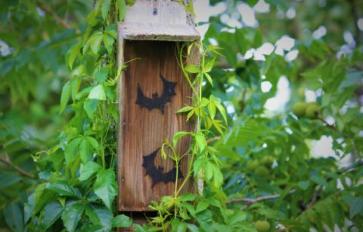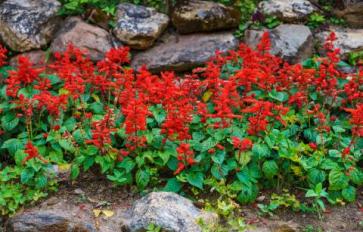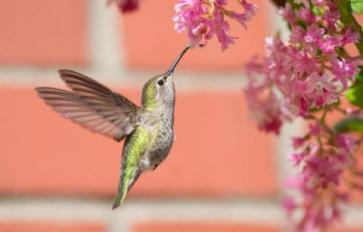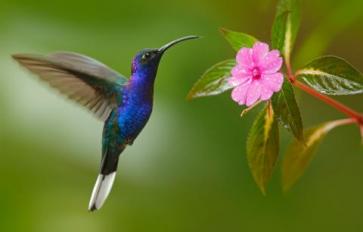
Basmati.com is celebrating Pollinator Week 2016! To spread the word about pollinator protection, this article will cover policies that have been implemented across the country to protect the bees.
Neonicotinoid pesticides can be harmful to bees and other pollinators when applied through a spray or onto the seeds of the plant. Friends of the Earth, an environmental activist organization, conducted a study to closer examine these effects. This is the first study of its kind, as many studies don’t consider the harmfulness level of those plants and seeds labeled as ‘bee-friendly.’ Friends of the Earth’s study concluded in part that,
“The findings indicate that bee-friendly nursery plants sold at U.S. retailers may contain systemic pesticides at levels that are high enough to cause adverse effects on bees and other pollinators — with no warning to consumers…. The high percentage of contaminated plants [54%] and their neonicotinoid concentrations suggest that this problem is widespread, and that many home gardens have likely become a source of exposure for bees.”
The recent substantial rise in Colony Collapse Disorder (CCD) has garnered media and policy attention alike, particularly in the last few years. Many cities and municipalities have heeded the potential warnings of neonicotinoids as the cause, effectively banning their use on public property.
Eugene, Oregon: Eugene was the first city in Oregon and in the United States to ban the use of neonicotinoid pesticides in June 2013. Eugene’s ban temporarily restricts the use of neonicotinoid pesticides on all city property. The ban was in response to the overall drastic decline in the bee population in Oregon, and specifically to a massive bee die-off during a spraying in a Target parking lot in Wilsonville, Oregon that resulted in the death of some 50,000 bees. Eugene (and other cities who have enacted the ban) stress that while this massive die-off is concerning, it is by no means the only incident: one of the biggest issues is the consistent use of lower level pesticides (residentially, publically and commercially) that contain neonicotinoids.
Portland, Oregon: In Portland, the city council called an emergency vote that called to ban the use of neonicotinoids until further evaluation has been done on their effects on pollinators. The ban was put in place in March 2015. The city council voted unanimously to enact the ban immediately. The ordinance applies to most public land in Portland and also stresses the importance of retailers labeling their products that contain these pesticides. Portland’s immediate application of the ordinance was motivated by the bee death mentioned earlier that took place in Wilsonville, Oregon when some 50,000 bees died after a massive spraying of neonicotinoids. Lori Ann Burd, the Director of Environmental Health for the Center for Biological Diversity, explained that it is not just these massive potent sprayings that are harmful to the bees; less potent exposure is just as harmful, “Bees who are exposed to even tiny levels experience hits to the neurological function…. They can’t find their way back to the hive, they have less foraging success, they can’t communicate effectively, and they can’t fight off wasps. Those impacts are really significant on the population scale.”
The massive bee die offs in Oregon, along with the urgently passed legislation in response, sparked the state of Oregon’s launch of a statewide task force to look more closely into not only preventative measures for pollinators, but also possible ways to protect them.
Spokane, Washington: Another city that has been taking legislative strides to prevent the use of neonics is Spokane, Washington. Spokane placed a ban on the use of neonics in June 2014, following Eugene’s lead. Spokane’s ban stemmed from similar motivations as a reaction to the massive bee die-off that occurred in Wilsonville, OR in 2013. The ban is similar in nature to the Portland and Eugene bans in that it prohibits the use of neonics on public property, but does not extend to privately owned property. The restricted use of neonicotinoids accounts for approximately 30% of Spokane.
Seattle, Washington: Seattle followed Spokane only a few months later, enacting a moratorium in September 2014 in a unanimous vote. The moratorium, like those passed in the Oregon cities and Spokane, applies to all city property in Seattle. Seattle differs, however, because it is a moratorium rather than a ban, so it is temporary in nature. The moratorium is in place until more evidence is collected on the exact nature of the effects of neonics. Through their action, Seattle has also called for a national moratorium on the use of the pesticides, pleading that the White House Task Force, U.S. Environmental Protection Agency, and Congress place a similar moratorium on use of neonicotinoids. Along with encouraging federal action, the resolution asks retailers within Seattle to stop selling plants, seeds or any other products that contains neonicotinoids.
Some municipalities outside the Pacific Northwest are making changes, too.
Stillwater, Lake Elmo, Saint Louis Park, and Shorewood, Minnesota have enacted some type of ban or moratorium. Further, the entire state of Minnesota is currently considering a statewide ban of the chemicals. If the statewide legislative action takes place, Minnesota would be the first state to take this action. In 2013, Minnesota passed a bill prohibiting plants grown with the use of ‘detectable levels’ of neonics to be labeled as ‘bee-friendly’. The decision was in response to public concern, and the legislature hopes to encourage consumers to purchase garden and household plants with the pollinators in mind.
Other municipalities that have taken legislative action against the public use of neonicotinoids are Ogunquit, Maine, Skagway, Alaska, Sacramento and Encinitas, California, and Boulder, Colorado.
Encinitas, California banned the use of neonicotinoid pesticides on all city property in September 2014 in response to public concern about the environment and massive loss to local beekeepers (as much as 42 percent of their colonies), so the Department of Parks and Recreation banned their use. Encinitas takes the use of pesticides so seriously that they are even implementing a trial of a park in the city that is completely pesticide free, and if successful, the program could be implemented citywide. Sacramento has a similar ban on the use of neonicotinoids on city property.
The ban of pesticides in the municipality of Skagway, Alaska is the first ban in the state. This ban seems to go the furthest, by banning the sale and use of pesticides containing neonicotinoids on both public and private land. Ordinance 14-15 was passed in September 2014, and has what seem to be the most stringent guidelines.
Ogunquit, Maine is thus far the only state on the East Coast that has taken a proactive stance on the use of neonicotinoids, passing the ban in November 2014. Maine has been a national pioneer in organic farming practices and apprehensive toward the overuse of pesticides for decades.
Regional Action: The potential connection between the use of neonics and Colony Collapse Disorder has also garnered the attention of those making changes on a regional level. The U.S. Fish and Wildlife Service’s National Wildlife Refuge System is in the process of eliminating the use of neonicotinoids.The U.S. Fish and Wildlife Service’s National Wildlife Refuge System is the first federal entity to take this stand on the use of neonics. The plan calls for a complete disposal of the use of all neonicotinoids and the use of genetically modified crops by January 2016 in the entire Pacific Region. The U.S. Fish and Wildlife Service’s National Wildlife Refuge System is responsible for 150 million acres of protected land throughout the country, specifically in Idaho, Oregon, and Washington—all of which will be protected from neonicotinoids.
While CCD is finally garnering attention in many different regions, there is still a long way to go before bees are protected from these harmful pesticides. We hope that 2016’s pollinator week will encourage more people to get involved in protecting the bees.








